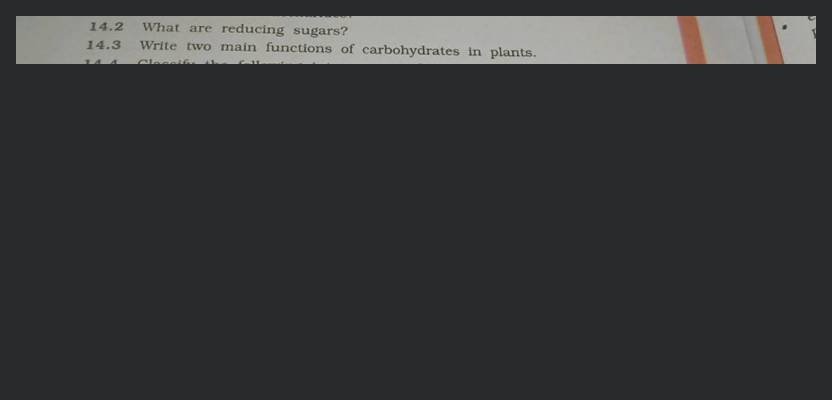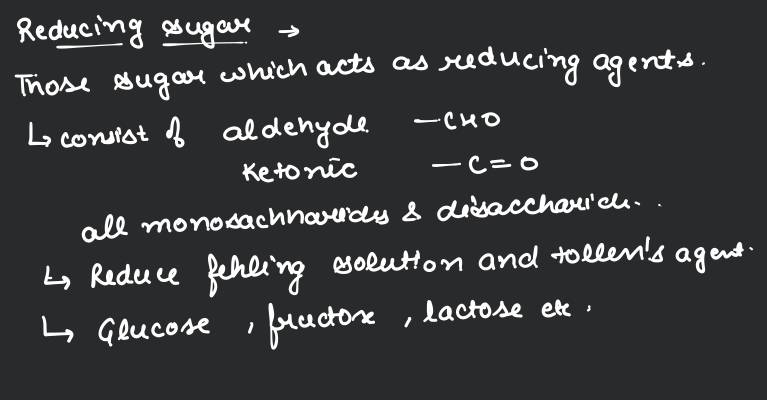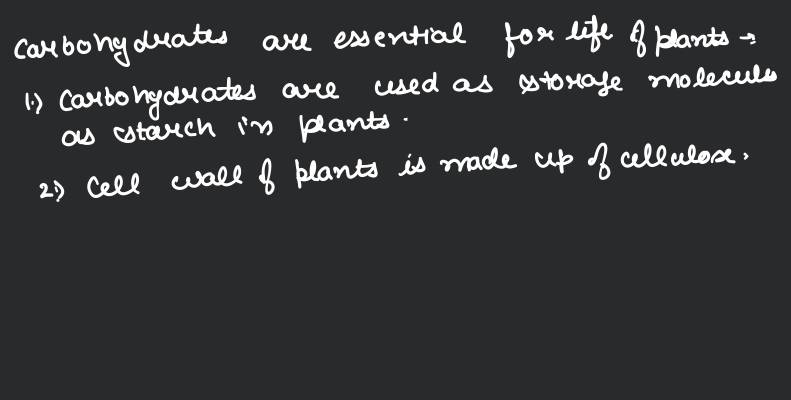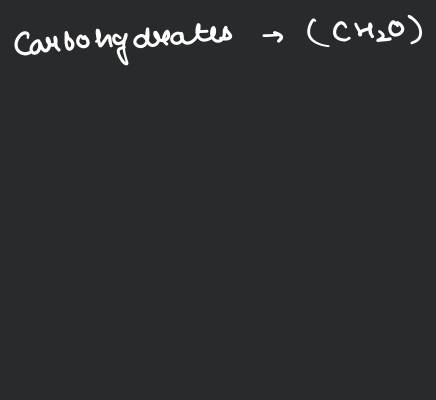Question
Easy
Solving time: 1 mins
What are reducing sugars?
Found 7 tutors discussing this question
Discuss this question LIVE
15 mins ago
 Text solution
Text solution Verified
Verified
All those carbohydrates which contain a free aldehyde or Ketonic group and reduce Fehling's solution and Tollen's reagent are referred as a reducing Sugar. Examples of reducing sugar is galactose, glucose, glyceraldehyde, fructose, ribose, and xylose.
Was this solution helpful?
19
Share
Report

One destination to cover all your homework and assignment needs
Learn Practice Revision Succeed

Instant 1:1 help, 24x7
60, 000+ Expert tutors

Textbook solutions
Big idea maths, McGraw-Hill Education etc

Essay review
Get expert feedback on your essay

Schedule classes
High dosage tutoring from Dedicated 3 experts
Practice more questions from Chemistry Part-II (NCERT)
Practice questions from Chemistry Part-II (NCERT)
Question 4
Easy
Views: 6,130
(i) (ii) Bromine water (iii) .
Practice more questions from Biomolecules
Practice questions on similar concepts asked by Filo students
Question 1
Views: 5,458
Question 3
Views: 5,033
Question 4
Views: 5,141


Stuck on the question or explanation?
Connect with our Chemistry tutors online and get step by step solution of this question.
231 students are taking LIVE classes
| Question Text | What are reducing sugars? |
| Updated On | Jul 21, 2023 |
| Topic | Biomolecules |
| Subject | Chemistry |
| Class | Class 12 |
| Answer Type | Text solution:1 Video solution: 1 |
| Upvotes | 139 |
| Avg. Video Duration | 5 min |








